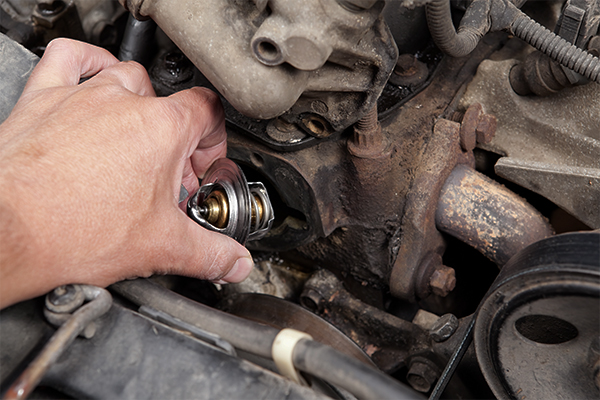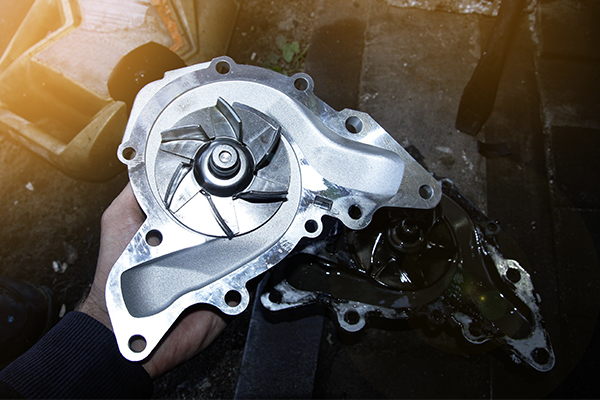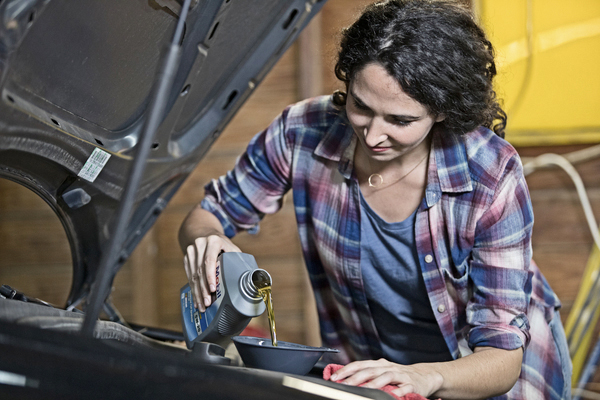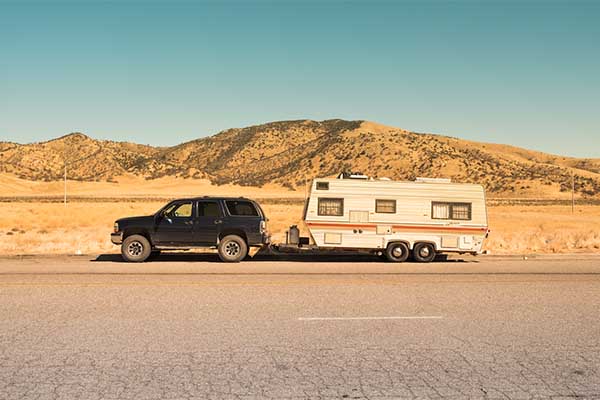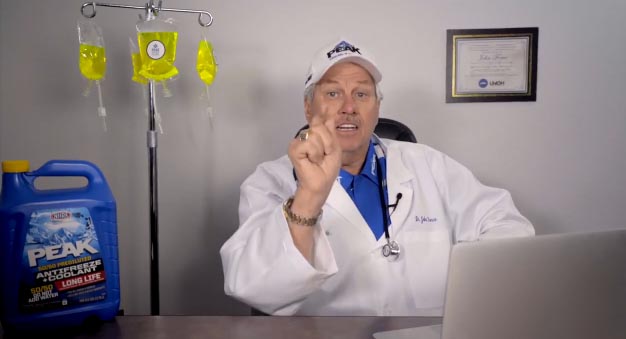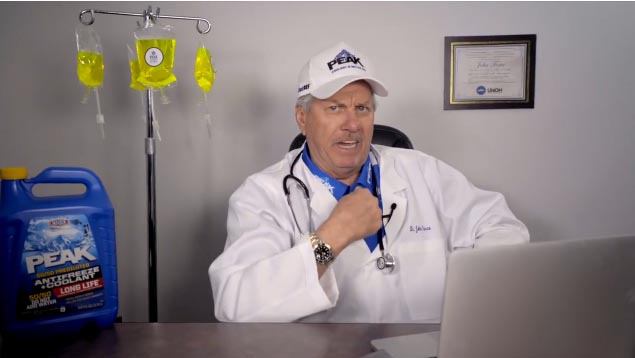It's been said there's a fine line between love and hate, and when it comes to your engine's relationship with heat, truer words were never spoken.
An internal combustion engine must have heat to run properly and prevent premature wear, but too much heat has the opposite effect, can destroy the engine, or at the very least cause extensive and expensive damage. Responsibility for keeping engine heat at optimal levels falls to the vehicle's cooling system and its components, which in turn depend on preventive maintenance periodically to keep the system and vehicle operating trouble-free.
In a nutshell, the cooling system works by transferring engine heat to the coolant or antifreeze, the coolant moving to the radiator where it loses the excess heat to the outside environment, and the coolant returning to the engine to start the process again. What sounds like a simple process actually depends on several cooling system parts working together flawlessly to keep the engine temperature at an optimal level, regardless of how hot or cold it is outside.
The main components of a car's cooling system include:
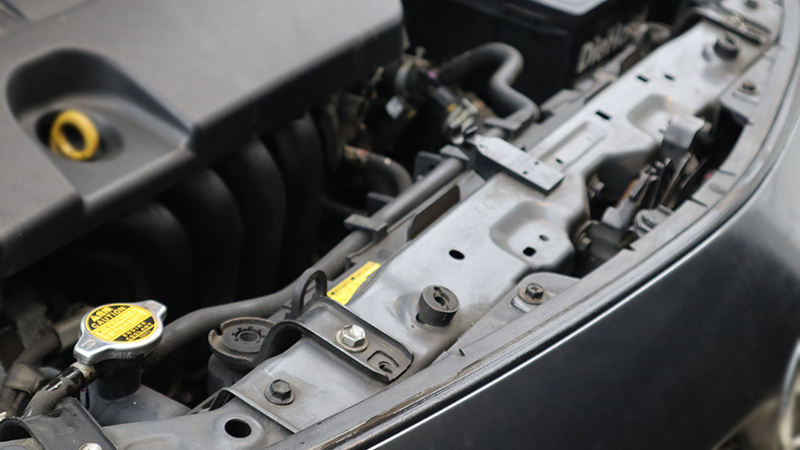
Radiators are often difficult to see, located under a mounting bracket and covered by a fan shroud. | Source: Lisa Kowite
RADIATOR
The radiator is a heat exchanger. Sitting at the front of the vehicle, it transfers heat from the vehicle's coolant flowing through it to the outside environment. Most radiators today are constructed of aluminum, but can also be made from plastic, while radiators in older vehicles are predominantly steel because of its strength and durability.
The radiator's design features thin, flat fins connected in a parallel fashion to flat tubes, all of which form a large, honeycombed, square or rectangular-shaped assembly that sits behind the vehicle's front grill. The radiator's exterior should be inspected periodically for an accumulation of bugs or other road debris that could affect its cooling ability, as well as for holes and leaks caused by impacts with stones.
Curious about your radiator? Learn more.
Never remove the radiator cap when the engine is hot – only when it's cool – because the system is pressurized and can cause personal injury.
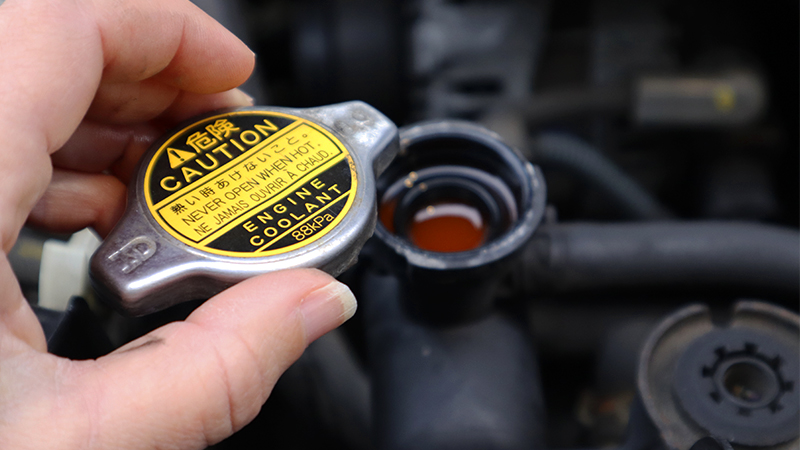
Enter your vehicle information on the Advance Auto Parts website to find the right coolant for your vehicle. | Source: Lisa Kowite
COOLANT/Antifreeze
Coolant, also called antifreeze, is the fluid that regulates the engine's temperature. The term antifreeze refers to the low freezing point of the fluid, which prevents it from freezing, even in extreme cold, and causing catastrophic engine damage. The name coolant refers to its important function of preventing the engine from overheating.
Coolant is usually a 50/50 mix of ethylene glycol and water, and it circulates through small passageways in the engine. As it does, excess heat transfers from the engine block to the coolant, raising this liquid's temperature. The coolant flows into one side, or the top or bottom of the radiator and then throughout the radiator's tubes. As it does, it encounters cool, outside air passing over the radiator's fins, causing the heat to move from the coolant to the air. The coolant leaves the radiator from the opposite side it entered and returns to the engine where the process starts all over again.
Coolant needs to be replaced based on vehicle manufacturer's recommendations in order to protect the radiator and entire cooling system from corrosion, and the engine from freezing temperatures. The coolant level should also be checked periodically by looking at the side of the plastic coolant reservoir tank.
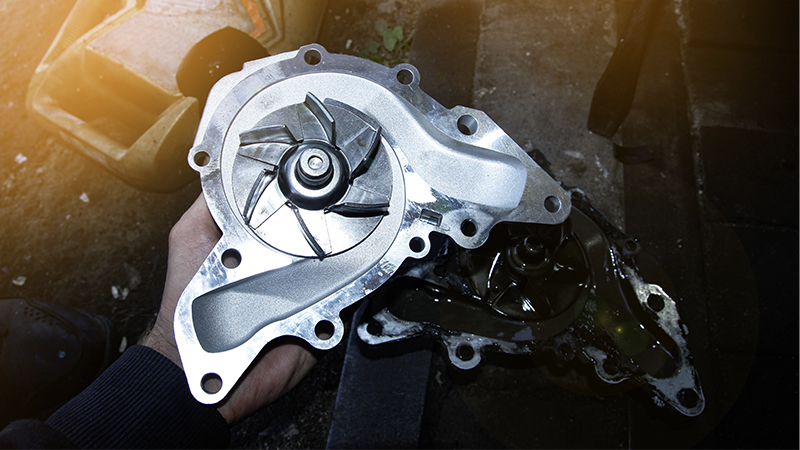
A view of the inside of a water pump showing the impeller. | Source: Getty
WATER PUMP
Coolant moves around and through the engine, to the radiator, and back again thanks to the vehicle's water pump, and some gravity. On most vehicles, the water pump is located under the timing belt cover and is driven by either the engine's timing belt or by the serpentine belt connected to the pump's pulley. The pulley and belt turn the pump's blades or vanes to create suction that - when coupled with centrifugal force - keeps the coolant circulating continuously. A water pump can fail, and because of this it's important to check periodically for coolant leaks. Read on for more information about how water pumps work (and how they can fail).
If you have a water pump that needs to be replaced, we recommend reading our general guide to replacing a water pump, or if you have a modern vehicle that's tight on space, get a better idea of some of the extra steps you may need to take with this more detailed guide.
On engines with timing belts, the water pump is often located behind the timing belt cover. To reduce labor expenses, it's recommended that the pump be replaced whenever the timing belt is replaced.
THERMOSTAT
Sitting between the engine and the radiator, and usually connected to the upper or lower radiator hose, the thermostat is essentially a valve that opens and closes to either allow or prevent coolant from flowing to the radiator. While preventing coolant flow seems like it goes against the whole concept of how the cooling system is supposed to work, there's a good reason for doing so.
When the engine is first started, it's cold. A closed thermostat prevents the coolant from moving to the radiator where it can be cooled, and instead helps the engine heat up quickly and reach its optimal operating temperature, reducing engine wear and delivering heat to the passenger compartment quicker.
A thermostat replacement is recommended whenever it's exhibiting signs of failure, or when the water pump is replaced. Want to know more? Read how thermostats work, plus find out an easy test to see if yours is working.
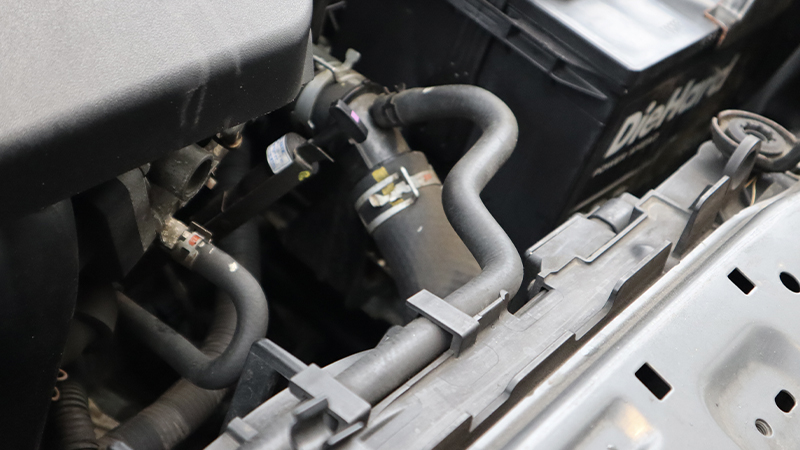
The upper radiator hose (marked yellow) connects the thermostat and radiator on this vehicle. | Source: Lisa Kowite
HOSES
Coolant travels from the engine to the radiator and back again through rubber hoses. Over time, rubber ages and can weaken due to continuous exposure to heat and environmental factors. Because of this, they're a maintenance item and need to be checked and replaced periodically.
Learn more about checking the radiator hoses here.
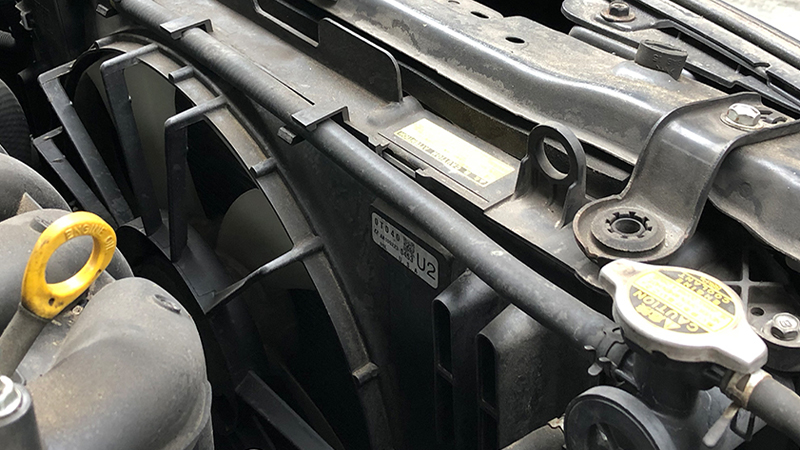
The radiator fan helps direct air to maximize the radiator's efficiency. | Source: Lisa Kowite
FAN
Think back to the radiator and the coolant flowing through it, shedding excess heat to the outside environment as it encounters cool air. The cooling system's fan and shroud – or multiple fans on some vehicles – play an important role in drawing in that cool, outside air, and making it flow across the radiator's surface, particularly when the vehicle is stationary or moving slowly. On modern vehicles, the fan is controlled by its own electric motor that turns on and off when the vehicle's computer instructs it to.
On older vehicles, the fan is controlled by a fan clutch. The fan's pulley can spin freely until a thermostat -- usually located on either the water pump or another belt pulley -- registers a specific rising temperature. At that point, the fan clutch engages, turning on the fan to help cool the engine. Read more about how an electric fan can keep your engine cool even on the hottest of days.
At Advance, we understand that even though you properly maintain your cooling system, things can still go wrong. Overheating is a common symptom of a cooling system that's not functioning properly. Now that you understand how the system works, take a look at some common causes of overheating and how to fix them yourself.


